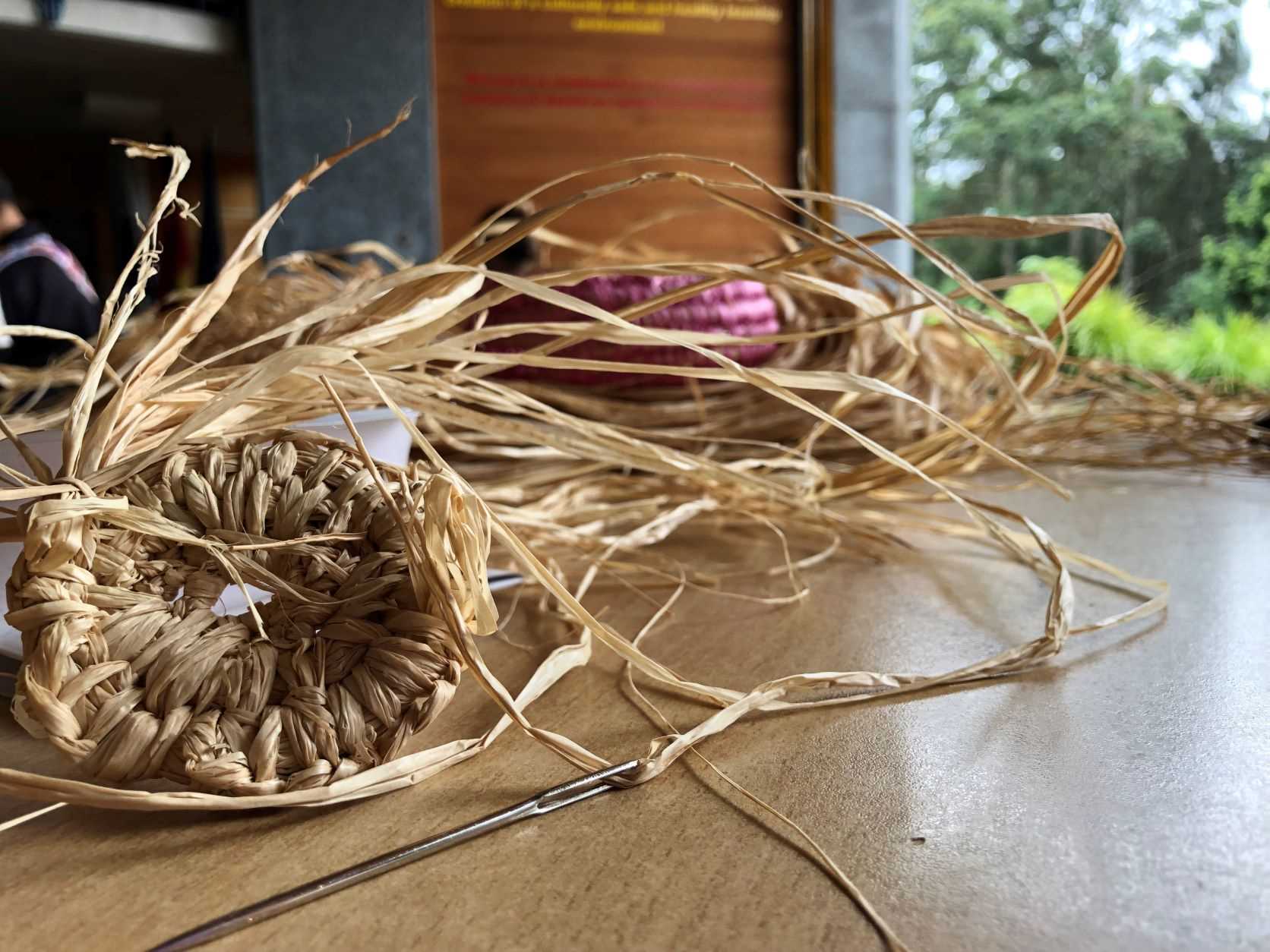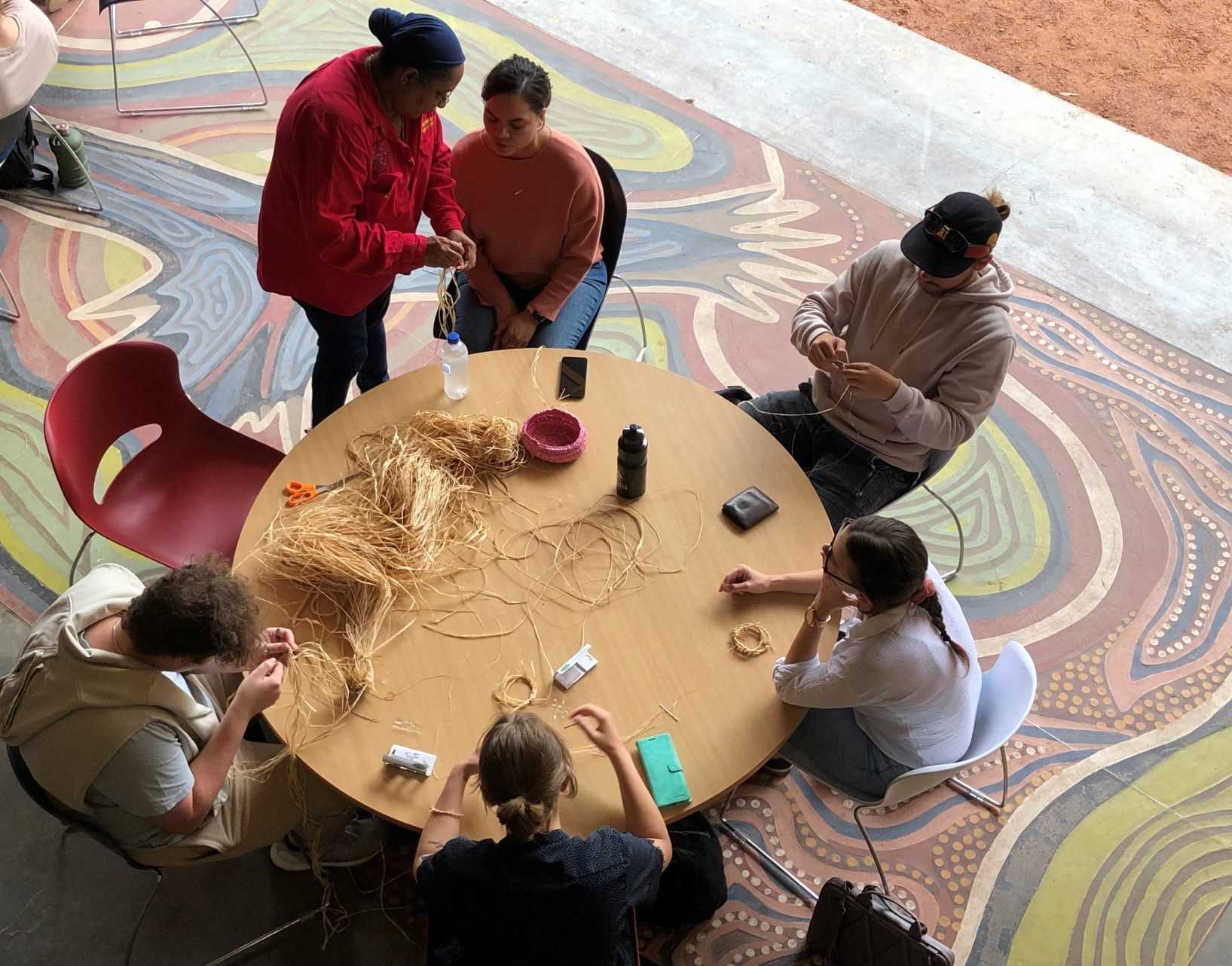Weaving brings Elders and communities together
A COVID initiative to reduce the isolation of Elders living in regional New South Wales has used weaving to link the communities of Bourke, Armidale and Uralla.
Every Tuesday, between 10am and 1pm, women from three weaving circles connect to Zoom to weave, troubleshoot, share design patterns and, best of all, show and talk about the artefacts they create.
As part of the Looking through Windows: A multi-media Art and History Exhibition, Dr Lorina Barker from the University of New England (UNE), ran a weaving workshop at Wollotuka Institute at the University of Newcastle (UoN) where staff students and Wollotuka Women’s Group came together to learn basic weaving techniques.
Thanks to technology, the groups in rural NSW joined them.
“The Aunties have changed their weaving day so they can Zoom in see what the Wollotuka group are doing and show them what they can work up to,” Dr Barker said.
There’s a peaceful, soothing and grounded feeling at Wollotuka as the women and some young men concentrate on getting their “starters” up and running.
“It’s easy once you get the hang of it,” said one workshop participant, Tyson Reichelt. “But when you first see someone doing it, you haven’t got one clue.”
Dr Barker advised participants to start with six pieces of raffia, keep a “tail”, which becomes a seventh, and then make the first knot.
“It’s the traditional blanket stitch and we all weave with the same stitch throughout the country,” Dr Barker said.
Another workshop participant, Tamara Fish suggested that there was more to weaving than making a basket.
“It provides a connection to culture for those people who don’t have a connection,” she said.
For convenience, the Wollotuka group used raffia to weave but Dr Barker showed workshop participants Lomandra (Lomandra longifolia), a native Australian grass traditionally used by Aboriginal women to weave their baskets, which grows prolifically at UoN’s Callaghan Campus.
Dr Barker told workshop participants that at UNE in Armidale, the Lomandra was routinely slashed.
“We had to say to them, please stop slaughtering our Lomandra, it’s part of our cultural heritage and now they’ve stopped doing it,” Dr Barker said.
The future plan, according to Dr Barker, is to create and sustain more weaving groups across the state.
“We hope to get funding to connect to communities downstream from Bourke and bring them in too,” she said.
She has suggested that the Wollotuka group meet with the Aunties from Bourke and Armidale every Tuesday via Zoom so that they can develop their skills, learn different designs and complete their own pieces.
Dr Barker is planning an exhibition in Bourke to bring these weaving groups together where many will meet face-to-face for the first time, although their connection to each other has already been firmly meshed through their practice.
This transference of Cultural Knowledge – from Elders to current generation, connecting to the Lomandra and spiny sedge – to weave Songlines together is their driving force.
For more photographs of the weaving workshop please visit the Wollotuka Institute facebook page.
Contact
- Jacqueline Wright
- Phone: (02) 4921 7408
- Email: jacqui.wright@newcastle.edu.au
Related news
The University of Newcastle acknowledges the traditional custodians of the lands within our footprint areas: Awabakal, Darkinjung, Biripai, Worimi, Wonnarua, and Eora Nations. We also pay respect to the wisdom of our Elders past and present.